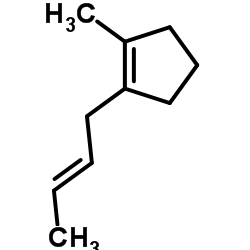Jasmine Oil

Jasmine Oil structure
|
Common Name | Jasmine Oil | ||
|---|---|---|---|---|
| CAS Number | 8022-96-6 | Molecular Weight | 136.234 | |
| Density | 0.8±0.1 g/cm3 | Boiling Point | 174.8±10.0 °C at 760 mmHg | |
| Molecular Formula | C10H16 | Melting Point | 47-52ºC | |
| MSDS | Chinese USA | Flash Point | 45.0±13.8 °C | |
| Symbol |

GHS08 |
Signal Word | Danger | |
|
The influence of essential oils on human attention. I: alertness.
Chem. Senses 26(3) , 239-45, (2001) Scientific research on the effects of essential oils on human behavior lags behind the promises made by popular aromatherapy. Nearly all aspects of human behavior are closely linked to processes of attention, the basic level being that of alertness, which ran... |
|
|
"Jasmine--the lactifuge".
J. Assoc. Physicians India 35(7) , 543-4, (1987)
|
|
|
Antioxidant activities and volatile constituents of various essential oils.
J. Agric. Food Chem. 55(5) , 1737-42, (2007) Thirteen essential oils were examined for their antioxidant activity using three different assay systems. Jasmine, parsley seed, rose, and ylang-ylang oils inhibited hexanal oxidation by over 95% after 40 days at a level of 500 microg/mL in the aldehyde/carbo... |
|
|
Jasmine absolute (Jasminum grandiflora L.) and its mode of action on guinea-pig ileum in vitro.
Phytother Res. 16(5) , 437-9, (2002) Jasmine (Jasminum grandiflorum L.) is used in aromatherapy as a holistic treatment for apathy, hysteria, uterine disorders and childbirth, muscle relaxation and coughs. Its stimulant nature, on inhalation, has been shown both in animals and man. Jasmine has a... |
|
|
Stimulating effect of aromatherapy massage with jasmine oil.
Nat. Prod. Commun. 5(1) , 157-62, (2010) The aim of this study was to investigate the effect of aromatherapy massage with jasmine oil (Jasminum sambac L., Oleaceae) on humans. Human autonomic parameters, i.e. blood pressure, pulse rate, blood oxygen saturation, breathing rate, and skin temperature, ... |